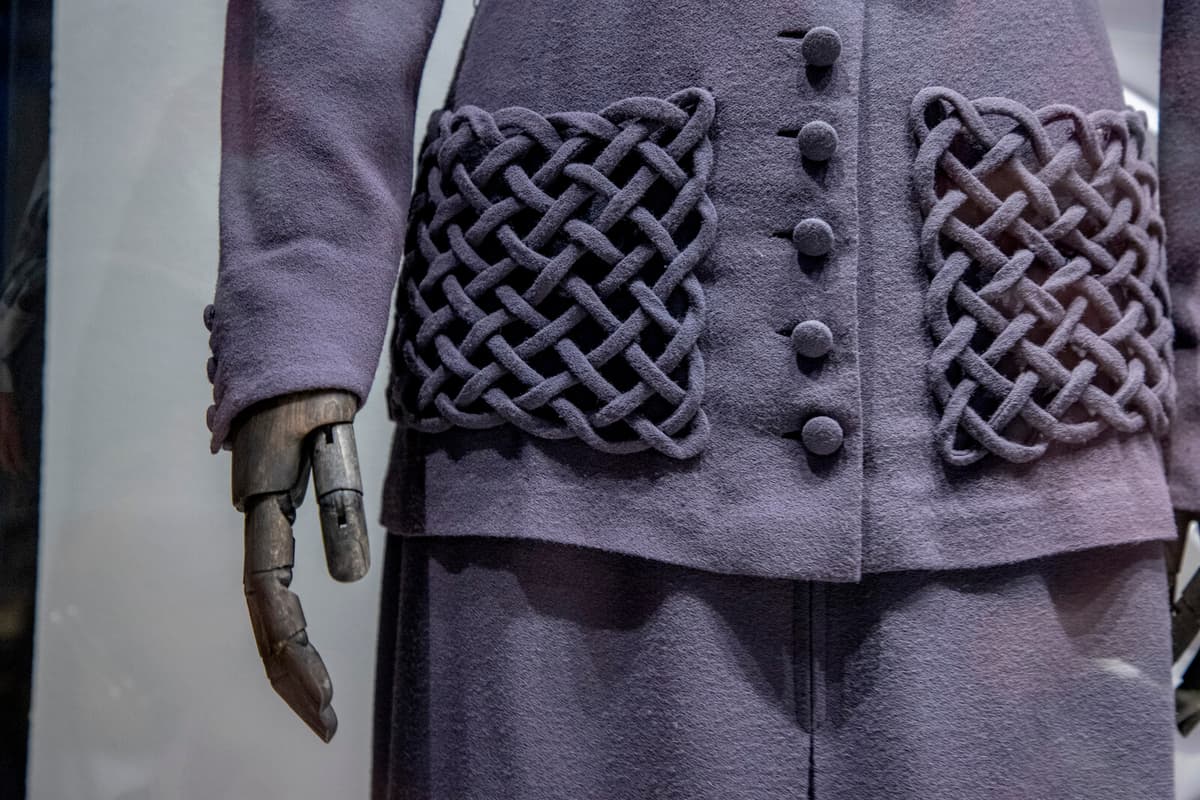Pockets on women's clothing are generally smaller than those on men's clothing, sometimes almost symbolic, or blind pockets – a pocket lock without any function. Outerwear often lacks inner pockets.
We humans have always needed to carry more than what fits in our hands. And for a very long time, men and women did it in the same way.
We can go back to the 1100s, when people had a pouch that they carried with them, like a small bag, and there they had personal belongings, says Emma Severinsson, lecturer in fashion science at Lund University.
This was later replaced by a kind of pocket. Not sewn into the clothes, but more like loose pockets that were tied with a belt or attached to a hook. In the Nordic Museum's collections, there are examples of such pockets, often beautifully embroidered, from as far back as the 1600s. This type of pocket was used in folk costumes for a long time and is still seen in folk costumes today.
Slits in the sides
The pockets were worn outside or inside the clothes. Those worn outside were often decorated with embroidery, while those worn inside were simpler. Older skirts often have slits on the sides so that you can reach a pocket under the skirt.
The 1700s fashion with skirts that were wide over the hips offered plenty of storage opportunities.
Especially during the second half of the 1700s, people had pouches, a holder to get under the skirt. There, you can put as much as you want, explains Leif Wallin, curator of costume and fashion at the Nordic Museum.
But then something happens that marks the beginning of the end for women's pockets.
At the end of the 1700s, beginning of the 1800s, when the empire style comes and the waistline moves up towards the bust and the dresses are no longer as voluminous, it becomes so that women can't have pockets anymore because they show, says Emma Severinsson.
The fabrics were also thinner, and anything you wore under would be visible and ruin the overall impression.
The solution was to move the pocket further from the body and carry it in your hand. Instead of having things in your pockets, you put them in a reticule (a small fabric bag).
It's the loose pocket that's lifted and becomes the beginning of a handbag, explains Leif Wallin.
More width
When the fashion with crinolines came in the mid-1800s and there was more fabric in the skirts again, the pockets didn't quite fit. There were pockets in dresses, but now they were often smaller and sewn into the garments instead of being loose. During the latter part of the 1800s, when dresses began to fit more closely over the hips, there were even fewer pockets.
Somewhere here, the difference emerges in how men and women carry their belongings, although there are naturally exceptions. Leif Wallin notes that older clothes weren't mass-produced like today, but if you needed pockets, you simply sewed them on.
In the Nordic Museum's collections, there is a dress from 1954 that belonged to journalist Else Kleen-Möller and has pockets both on the sides and a breast pocket – another rarity on women's clothing.
The 1950s marked an upswing for pockets, explains Leif Wallin.
Then they came back big time. They were a great way to emphasize the narrow waist on Dior's New Look.
Whether they actually served a function as pockets or mostly to accentuate the hips is unclear. Blind pockets are not uncommon on women's clothing.
Self-evident part
Despite there being room for pockets when cargo pants, oversized and workwear were in fashion, the handbag has retained its position.
The handbag has become such a self-evident part, and it's reinforced by the fact that women are expected to carry a lot more, says Emma Severinsson.
We have keys and wallets and phones, but are also expected to carry a bit of makeup, maybe a hairbrush. It says something about why the handbag exists.
The handbag has also become a status symbol, notes Emma Severinsson.
When the "man bag" trend started around 20 years ago, it couldn't be a handbag because there's such a clear gender coding in it.
Became a status symbol
The handbag has also become a status symbol and a cash cow for fashion houses. In 1955, Chanel launched its classic quilted bag, groundbreaking because it had shoulder straps that allowed women to have both hands free.
In 1984, Hermès created the Birkin bag when actress Jane Birkin complained to Hermès CEO Jean-Louis Dumas that there were no nice bags that worked for a young mother.
A handbag is also something we often use for a long time, and it's often described as an investment to buy an expensive bag, says Emma Severinsson.
Since then, the bag has also become something personal. There, you carry the things you need in life, and a bit extra for safety's sake, and you carry them close to you.
It's something you carry with you all the time, but also very personal what you carry with you. And somehow, it also feels very intimate to rummage through someone else's bag.
On November 1, 2023, a ban on bags was introduced at all larger events in Sweden. The decision was made due to the increased terrorist threat level from three to four.
All larger events for public visitors, such as concerts, festivals, and sports events that require permits, are covered by the ban. Demonstrations are not included.
For certain arrangements, the police can decide on a ban on bags larger than 40x40x20 centimeters





